Welcome to the fourth annual OFR prospect list! This year we return with another 50 prospects. As with last year, I will be joined this year by Sunday Farm Report co-writer and OFR Farm Report Podcast co-host Matt Chrietzberg.
This portion of the list includes two relievers who could toe the rubber in Atlanta this year, two talented 2018 draftees that had severe injury-related setbacks, a couple more 2019 prep draftees, and perhaps the top power prospect on the whole list.
Also in this series:
Atlanta Braves Top 50 Prospects: #50-41
Atlanta Braves Top 50 Prospects: #40-31
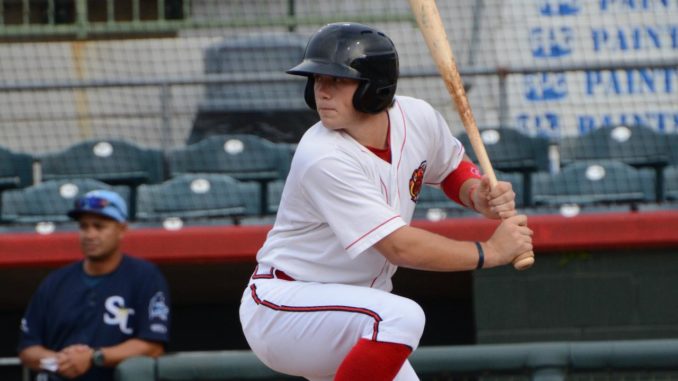
30. Logan Brown, C
Age: 23 | Bats: L
.272/.313/.334 | 92 wRC+ | 1 HR | 5 SB | 4.4% BB | 21.3% K (A/A+)
Current Assignment: A+ Florida
Acquired: Drafted, 35th Round – 2018
Prior Year Ranking: N/A
Brown is the son of former major league catcher (not pitcher) Kevin Brown, the first of two players on this list that are the scions of major leaguers. The younger Brown was a late round pick by the Braves, but impressed in his pro debut with Danville with solid receiving skills and strong bat-to-ball skills. Brown carried those same attributes to Rome in 2019, then received a midseason promotion to advanced-A Florida.
As a hitter, Brown doesn’t try to do anything fancy at the plate. He takes what the pitcher gives him, uses his strong hands and wrists to barrel up the pitch, and take it up the middle. This leads to a lot of opposite field hits, so defenses can’t really shift on him. He does however hit a lot of balls on the ground, and the stronger defenses of the Florida State League took a toll on his productivity when we was promoted to the Fire Frogs. Defensively he’s a tough-nosed blocker and a strong game caller. He has a good arm and footwork, and is all-together fundamentally sound. To take the next step he will need to work on his athleticism and his framing.
Brown did try to pull the ball more in Florida, perhaps in an attempt to put more power into his game. If so, the early results weren’t encouraging, as he dropped 82 points in OBP from his Rome numbers and didn’t hit a homer with Florida. Ideally he would start to elevate the ball more just to keep it off the ground so much, but his strength as a hitter is going to all fields. A return to Florida or a promotion to AA Mississippi seems equally likely landing spots for Brown to start the 2020 season. -AH
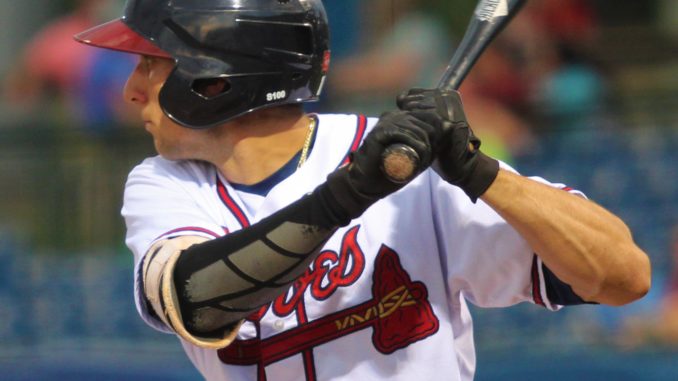
29. AJ Graffanino, SS
Age: 22 | Bats: L
.318/.344/.382 | 106 wRC+ | 1 HR | 5 SB | 4.9% BB | 14.7% K (Rk+/A – 2018)
Current Assignment: A+ Florida
Acquired: Drafted, 8th Round – 2018
Prior Year Ranking: 22
Graffanino made a splash after signing with the Braves in 2018, showing an all-fields approach at the plate and better-than-advertised hands and reactions at shortstop. Graffanino was moved up to advanced-A Florida to start the 2019 season, but only got one plate appearance before an injury took him out of commission. At first, it didn’t appear that Graffanino would miss a lot of time — he didn’t go on the injured list until 23 days later — but in the interim he contracted what is reported to be a severe gastro-intestinal issue. It was serious enough to wipe out the rest of his season, though he did get assigned to the GCL for rehab right at the end of the season. Unfortunately fears of a Hurricane Dorian landfall caused the cancellation of the last week of games for the Gulf Coast and Florida State Leagues, and Graffanino was not able to get into a game.
When healthy, Graffanino may be the top defensive shortstop in the Braves minor league system. He has good range and a strong and accurate arm, and he has the good shortstop mentality of always hunting for outs. At the plate, Graffanino is a slash hitter, looking to use his hands and bat speed to take the ball where it’s pitched and cross up defenses. The challenge for Graffanino moving up through the organization is making that work as defenses improve and keep a high line-drive rate.
Graffanino is likely ticked back to the Fire Frogs to start 2020, looking to rebuild strength and knock off the rust of a wasted season. -AH
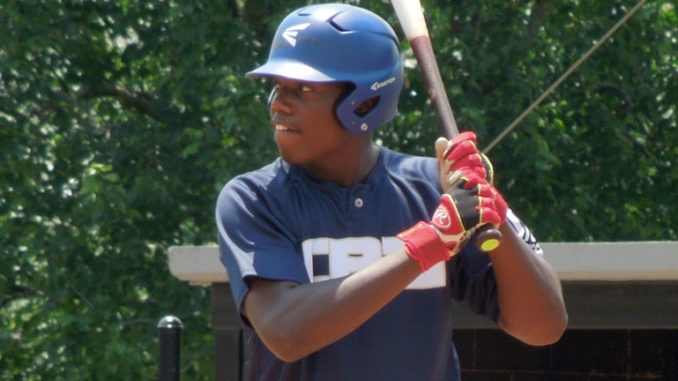
28. Mahki Backstrom, 1B
Age: 18 | Bats: L
.300/.402/.457 | 149 wRC+ | 2 HR | 1 SB | 14.6% BB | 32.9% K (Rk GCL)
Current Assignment: Rk GCL
Acquired: Drafted, 18th Round – 2019
Prior Year Ranking: N/A
Mahki Backstrom, a Fresno State baseball commit and one of the final additions to the Atlanta Braves 2019 draft class, signed just a few days before the deadline for $397,500. Due to his late signing, he only got a brief taste of pro ball in the GCL where he put up a .300/.402/.457 line in 82 plate appearances.
Backstrom, a 6’5” physical specimen, ranked in the 99.74% percentile of exit velocity among the class of 2019 as well as the 98.8% percentile of max barrel speed, the 99.6% percentile of impact momentum and the 92.81% percentile of max acceleration as well as showing good agility and footwork at first base. Although he didn’t have a great senior year, the physical tools were too tantalizing to dissuade the Braves from selecting him and pay well over slot to sign him.
Although Backstrom has superior physical tools and prodigious power, he is still very much a project who will be playing his full 2020 season at the age of 18. He will most likely head to Northport for extended spring training before heading to Danville when their season opens with a chance to work his way to Rome depending on his performance with the D-Braves. Don’t expect him to be this far down on the list for long. -MC
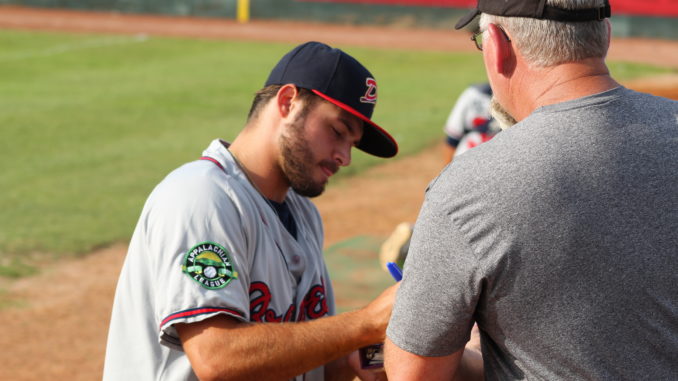
27. Tyler Owens, RHP
Age: 19 | Throws: R
4.28 ERA | 3.99 FIP | 10 G, 9 GS | 27.1 IP | 3.95 BB/9 | 10.54 K/9 (Rk GCL/Rk+)
Current Assignment: Rk Danville
Acquired: Drafted, 13th Round – 2019
Prior Year Ranking: N/A
The first of three high-ceiling prep pitchers taken by the Braves in Day Three of the draft (along with Jared Johnson and Joey Estes), Owens got the largest signing bonus of any Day Three draftee and the highest bonus of any prep draftee after outfielder Stephen Paolini. Owens was also the only prep draftee to be promoted in 2019, moving up from the GCL to Danville after two appearances.
In both stops, Owens showcased a mid-90s fastball and a developing slider and change-up. The fastball can touch 99 in short stints. Owens is only 5′-10″ and could add a couple inches of height, but even if not he still has a solid trunk and is able to get velocity through utilizing his lower half well. There weren’t a lot of good swings against Owens, even against older competition in the Appalachian League, and improvement in repeating his release point should help his command.
Of the three teenage pitchers drafted in 2019, Owens seems to be the best bet to start in class-A Rome to being 2020. The Braves could elect to start him in the bullpen to manage his innings, as they did with Freddy Tarnok in 2018 and Victor Vodink in 2019. -AH
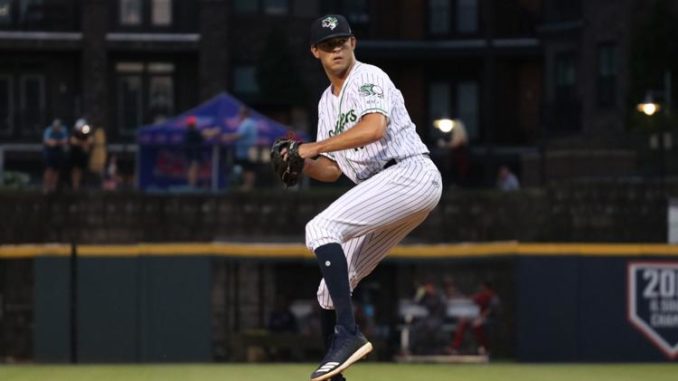
26. Jeremy Walker, RHP
Age: 24 | Throws: R
2.78 ERA | 2.42 FIP | 38 G, 2 GS | 90.2 IP | 1.50 BB/9 | 8.78 K/9 (AA/AAA/MLB)
Current Assignment: MLB Atlanta
Acquired: Drafted, 5th Round – 2016
Prior Year Ranking: N/A
After spending all of 2018 as a member of the Florida Fire Frogs starting rotation, Jeremy Walker began 2019 at Mississippi as a piggyback partner for starter Patrick Weigel, who was on greatly reduced pitch counts early on in his return from elbow surgery. Surprisingly, Walker took to the role immediately. After Weigel was promoted to Gwinnett in mid-May, Walker made one start then moved into the bullpen full-time as a multi-inning, high-leverage option. He was promoted to Gwinnett in early July after compiling a 2.45 ERA, 2.11 FIP, and a 2.36 xFIP in 58.2 innings for the M-Braves while striking out nearly a batter an inning and walking just five hitters during that time for a 1.04 WHIP. He had a couple of rough outings upon his arrival at Gwinnett then quickly acclimated with three scoreless appearances before getting the call up to Atlanta.
Walker pitched well in his first four MLB outings before being returned to Gwinnett. He was brought back during expanded rosters in September but was used just twice during the month due to the division race and not at all after September 15th.
Walker’s stuff plays up better in his bullpen role with a fastball that can reach 96 along with a curveball and slider which he can locate well. He may not be on the big-league roster to start out 2020, but he should be a regular member of the Atlanta/Gwinnett shuttle due to his 40-man roster status. -MC
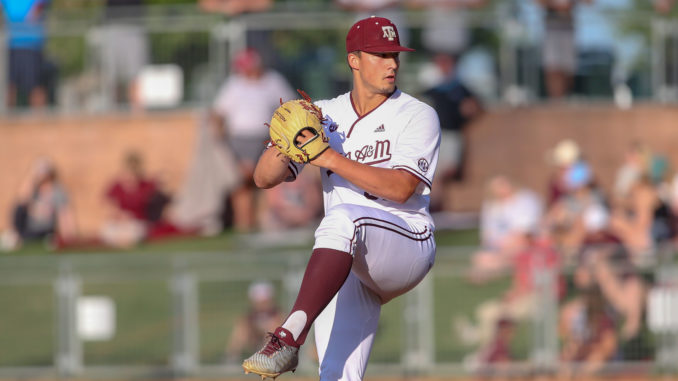
25. Kasey Kalich, RHP
Age: 21 | Throws: R
1.25 ERA | 2.80 FIP | 14 G, 0 GS | 21.1 IP | 4.57 BB/9 | 9.97 K/9 (Rk GCL/A)
Current Assignment: A Rome
Acquired: Drafted, 4th Round – 2019
Prior Year Ranking: N/A
The Braves plucked Kalich from Texas A&M with a 4th round pick as a draft-eligible sophomore after the right-hander made a successful switch to the bullpen for the Aggies where he struck out 51 batters in 34 innings and racked up 12 saves. Kalich looked just as good for Rome in his first taste of pro ball, striking out 22 batters in 21.1 innings and only allowing 10 hits. The only knock against Kalich’s pro debut was the 10 walks in those same 21.1 innings.
The first pitcher taken by Atlanta in the draft, Kalich has a prototypical pitcher’s body at 6′-3″ and 220 pounds. He throws a four-seam fastball that tends to ride high in the zone and tops out in the high ’90s, but his main strikeout pitch is a hard mid-80s slider that he can cut away from left-handed batters. Kalich is also developing a straight change and curveball.
Kalich has the stuff and mentality to potentially be a high-leverage reliever for Atlanta, and it may not take him long to get there. Look for him to start the season in high-A Florida but if he shows consistent command and a third pitch emerges, he could move up the chain rapidly. -AH
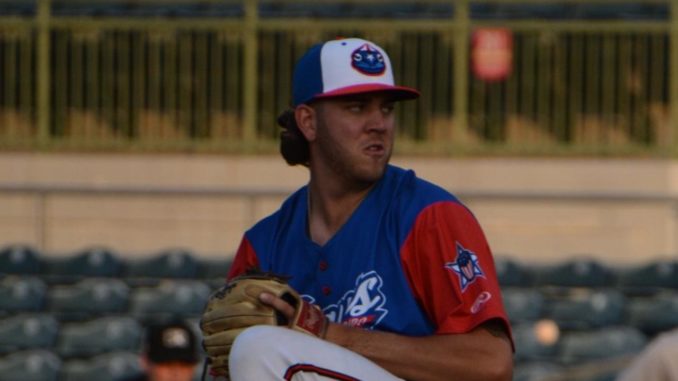
24. Nolan Kingham, RHP
Age: 23 | Throws: R
3.92 ERA | 2.93 FIP | 27 G, 27 GS | 165.1 IP | 1.96 BB/9 | 6.31 K/9 (A/A+/AA)
Current Assignment: AAA Gwinnett
Acquired: Drafted, 12th Round – 2018
Prior Year Ranking: 43
Nolan Kingham started off his 2019 campaign at Rome after finishing off 2018 getting into 11 games for Danville following the June draft. He quickly proved to be too much for the Sally in giving up just one earned run over sixteen innings in three starts before earning a quick promotion to Florida. Kingham spent most of the season with the Fire Frogs, amassing 113.2 innings over 18 starts with a 4.43 ERA but with just a 3.26 FIP and 3.36 xFIP. He proved to be a workhorse capable of dominating performances including three complete game shutouts and another two starts where he gave up no earned runs, but also had six where he gave up at least five earned runs. He totaled nine quality starts including his last four before being promoted to Mississippi in early August following the promotions of Ian Anderson and Tucker Davidson to Gwinnett. Kingham had a decent run of six starts at Mississippi to close out the season including a complete game win in his final start of the season. He finished up his Mississippi stint with a 3.79 ERA, 4.61 FIP and a 4.10 xFIP.
Kingham has a low-to-mid 90s fastball with movement to go along a nice slider and a changeup that gets used occasionally. His arsenal is primarily pitch-to-contact as evidenced by only striking out about 17% of batters he faces although he keeps the walks manageable at under 7%. The key to his success will be keeping the ball on the ground and in the park. At Florida, his groundball rate was 52.2% and he only gave up six home runs in 113.2 IP but in Mississippi, the GB rate dipped to 44.5% while he allowed five long balls in just 35.2 innings. Kingham will get a chance to improve upon those numbers as he will be near the top of the Mississippi rotation to start 2020 while he tries to reach his ceiling of a back-end starter. -MC
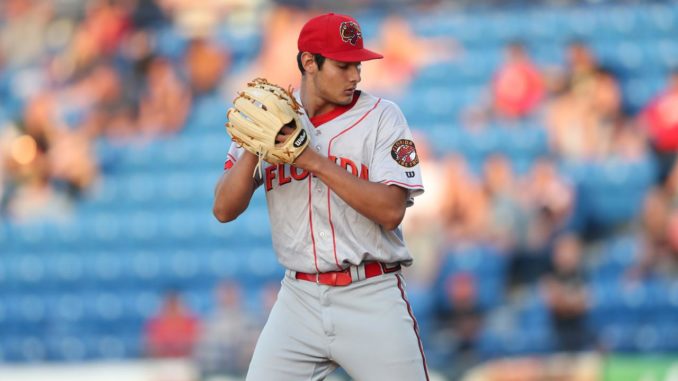
23. Freddy Tarnok, RHP
Age: 21 | Throws: R
4.87 ERA | 3.72 FIP | 19 G, 19 GS | 98.0 IP | 3.31 BB/9 | 7.53 K/9 (A+)
Current Assignment: A+ Florida
Acquired: Drafted, 3rd Round – 2017
Prior Year Ranking: 19
The 2019 season saw Tarnok start the season in a rotation after starting 2018 in the Rome bullpen and advancing a level to the Fire Frogs. Nearly 3 years younger than the average age of his competition, Tarnok struggled with growing pains through the first half of the season, then with actual pain for a month as he was sidelined with and injury for 4 weeks in mid-season. When he returned to action he showed strong improvement with command and getting deeper into games, important developments as he comes into a pivotal year.
As a reliever with Rome, Tarnok saw success basically throwing his fastball as hard as he could and using his plus curveball for swing-and-miss. As a starter, Tarnok has struggled to incorporate a third pitch and get quick innings by pitching to contact. This improved throughout the 2019 season and he ended up allowing as many baserunners in 2019 as in 2018 despite getting fewer strikeouts and allowing more hits. This was due to his improved control, a crucial development if he is to remain a starter. There is no question about Tarnok’s stuff, and when he is able to repeat his mechanics he has a potentially lethal fastball/curve/change combo.
My guess is that Tarnok will return to Florida to make sure that the improvement in the second half of 2019 solidifies before challenging him with a AA assignment. While results and health-wise 2019 was likely not what Tarnok or the Braves had envisioned, it was the “good” kind of struggle that Tarnok has shown he can work through and could make him a better pitcher. -AH
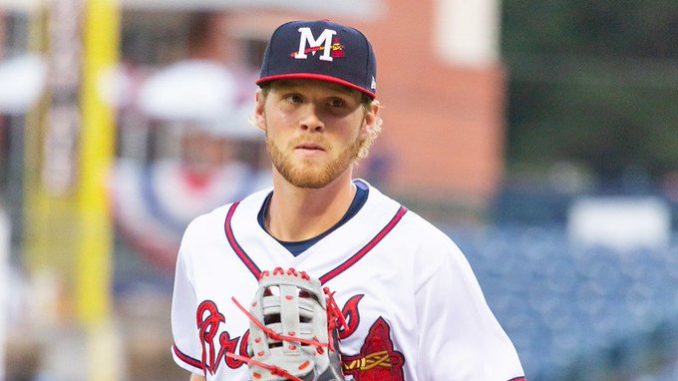
22. CJ Alexander, 3B
Age: 23 | Bats: L
.117/.245/.180 | 33 wRC+ | 2 HR | 0 SB | 14.5% BB | 28.3% K (A+/AA)
Current Assignment: AA Mississippi
Acquired: Drafted, 20th Round – 2019
Prior Year Ranking: 16
CJ Alexander’s 2019 is a season he won’t be remembering fondly. He began the season at Mississippi alternating between playing first base and pinch-hitting appearances while never playing third base. It turns out there was a reason for that, as he only played about 2 ½ weeks before undergoing arthroscopic surgery on his right elbow on April 30th and missing the next two-plus months. Upon his return, he was assigned to Florida where he got back in game shape although it didn’t show in the results with a .133/.297/.150 line in 19 games while playing first base, third base and even a game in left field. Alexander returned to Mississippi at the beginning of August where he continued to struggle with the bat with a .075/.098/.225 line while strictly playing third base. Unfortunately, his season came to an end on August 18th when he fell over a railing along the third-base line as he was chasing a foul ball.
Alexander is expected to be fully healthy to start 2020 as he will most likely return to Mississippi to play third base. If he can return to his 2018 form, his size, power and ability to play multiple positions could eventually propel him to a role at the major-league level where he can play every day while rotating among the infield and outfield corners. -MC
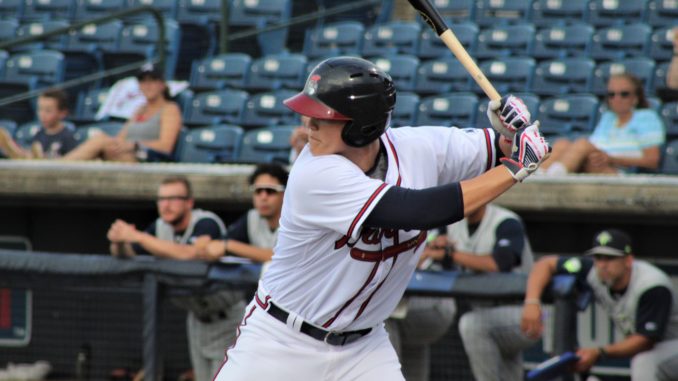
21. Bryce Ball, 1B
Age: 21 | Bats: L
.329/.395/.628 | 173 wRC+ | 17 HR | 0 SB | 9.9% BB | 19.0% K (Rk+, A)
Current Assignment: A Rome
Acquired: Drafted, 24th Round – 2019
Prior Year Ranking: N/A
When Ball hit a home run in the NCAA Regional Tournament to help advance Dallas Baptist past the University of Florida, he may have thought that would be the highlight of his year. Instead he took to the pro game like a duck to water, hitting .324/.410/.676 with 12 home runs in only 41 games for the Danville Braves and earning Appalachian League Player of the Year honors before getting a promotion up to Rome for the final 21 games of the season and hitting a similar .337/.367/.547 with 4 home runs. Quite frankly, no position player in the 2019 draft had a more explosive offensive debut than Bryce Ball.
A 6’6″, 220 pound mountain of a man, Ball has easy raw power. The ball explodes off his bat, and he doesn’t sell out to try to pull the ball over the fence; he is a threat to go yard in all fields. Ball has an uncomplicated swing and above average strike zone judgement that should help keep him from prolonged slumps. He does put the ball on the ground a little more often than would be advisable, but he hits the ball so hard he gets plenty of base hits past infielders, at least that the lower levels; this could be a weakness as he climbs the org ladder and faces better defenses. Defensively his best position is hitter, but he doesn’t embarrass himself at first base either.
Looking like yet another late-round steal for Atlanta, Ball represents the best first base prospect in the Braves system since Freddie Freeman, and he could end up starting 2020 anywhere from Mississippi back to Rome depending on how aggressive the Braves want to push him. -AH

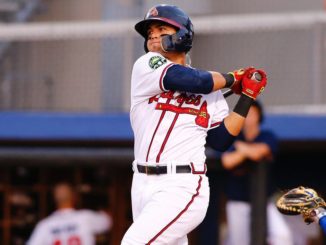
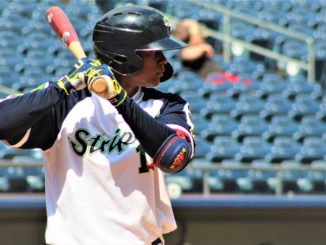
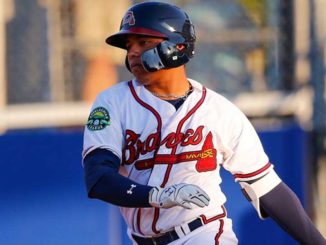
Leave a Reply